"This is technical fantasy – an aircraft with these parameters cannot be built at present." The mighty Sukhoi Su-7BMK!
On the Sukhoi Su-7BMK "Fitter A"
"This is technical fantasy - an aircraft with these parameters cannot be built at present." This was the written disbelief with which the Scientific and Technical Council of the Model Commission reacted to the announced performance data of Sukhoi's latest project, the S-1. This was in February 1954. Just over a year later, in September 1955, the sceptical experts of the Council were proved wrong: the prototype of the new fighter aircraft, now already called the Su-7, took off for its maiden flight and was even able to significantly surpass the performance that had been considered impossible. How had this come about?
At the beginning of the 1950s, air battles were still being fought in the high subsonic range, with cannons and machine guns. "Hot" conflicts of the Cold War, such as the Korean War that had just ended, had provided the first operational experience with pure jet aircraft, which could now be incorporated into the design of a new generation of fighter aircraft.
Even at this early stage, in the mid-1950s, new requirements were emerging that had been set far higher. A mere further development of the existing material would not be sufficient. In addition, alarming news came from the West. The latest US designs such as the supersonic F-100 or the emerging F-101, not to mention the projected F-104, would soon upset the precarious balance. In order to be able to stand up to this, the Soviet Union had to follow suit immediately.
In May 1953, Pavel O. Sukhoi had been appointed chief designer of OKB-1, which had been founded the previous year. The primary purpose and task of this design bureau was to provide the Soviet Union with a 2nd generation fighter aircraft as quickly as possible.
Speeds far above Mach 1, missile armament as well as equipment with on-board radar would have to be among the basic requirements of the new fighter generation. The time frame for the development of a fighter aircraft capable of just under Mach 2 was tight: By the middle of 1955, the new type was to have reached operational readiness. How ambitious these targets were is illustrated by the fact that at that time no supersonic aircraft could be found in the USSR.
By November 1953, Sukhoi had completed plans for a "front-line fighter" known as the S-1, and in February 1954, OKB-1 was able to officially present the new design. The performance data presented at that time triggered the incredulous reactions described at the beginning.
From 1958 onwards, the Su-7 came off the production line, whereby the Su-7B, in contrast to the A-version, which was still designed as a pure interceptor, was to be produced in a much higher number of units. Between 1958 and 1976, a considerable number of 1847 Su-7s were delivered, 691 of which were destined for export. The Su-7B was the essential fighter-bomber of the Soviet Union and the Eastern Bloc respectively during these decisive years of the Cold War.
The quality of the basic design is also reflected in the continuous further development of the "Fitter", as the aircraft was called in NATO jargon. In the course of time, Sukhoi's ingenious design led to successful models such as the Su-17 and the Su-22, which served the Warsaw Pact forces as powerful fighter aircraft until the end of the Cold War.
Among its many advantages, however, the Su-7 also had characteristics that complicated its use. These were, above all, its high fuel consumption as well as its remarkably high landing speed and the long take-off and landing runways it required. The first problem could only be solved by constantly carrying two external fuel tanks. These occupied two of the original four underfuselage pylons and thus reduced the capacity of drop weapons carried. The issue of high landing speed was addressed by the introduction of a brake parachute. Interesting to know: this circumstance also led to the development of the Su-17/ Su-22 "Fitter B" swing-wing aircraft derived from the Su-7 in the mid-1960s.
A final look at the performance data of the Su-7BM illustrates how this model, alongside the legendary MiG-21, was able to become the epitome of Soviet air armament.
A powerful Lyulka AL-7F-1 jet engine with 98.1 kN static thrust accelerated the not exactly light construction with a maximum take-off mass of 13,500 kg to Mach 1.1 at sea level, at an altitude of 12 kilometres it could reach Mach 1.6 or 1700 Km/h. The operational range was given as a narrow 250 kilometres, but with four external tanks the range could be increased to a maximum of 1450 kilometres. The 60-degree swept wings kept the wingspan below that of a Spitfire: 8.93 metres against a length of 17.37 metres.
The problematically long take-off distance, already mentioned in the text, was a whopping 2,400 metres.
The Su-7BMK in India
As already mentioned, the Su-7 was one of the aircraft released for export. Two countries in particular used the aircraft in large numbers. Piquantly, these were Egypt and India, two nations that professed a third side, the Non-Aligned States, in the divided bipolar world of the Cold War. India flew the Su-7BMK extensively in the 1971 war against Pakistan. The design proved both its potential as a fighter and fighter-bomber and its ability to take the toughest of hits. Of the 140 Su-7s, 14 were lost in combat. Three Su-7s were the result of Pakistani Shenyang J-6s, while Su-7s managed to shoot down at least two Chinese-licensed MiG-19s.
The high survival rate after severe battle damage also became legendary. An example is Wing Commander H. S. Mangat's Su-7, which was flown back and landed after being hit by a Pakistani Sidewinder with only half of its vertical stabiliser, elevators and ailerons shredded and flaps destroyed. After the happy return, half of the enemy Sidewinder missile was found in the tail fairing of the landing parachute.
My model shows a colourful Su-7BMK of the 32nd Squadron of the Indian Air Force in 1982. The form of camouflage shown was introduced in the IAF after the 1971 war.
To the building process
As usual with Eduard, the attractive packaging contains an "all-round carefree package" consisting of scratched parts, Eduard-Brassin material and masking tape. Especially the ejector seat, built from resin and etched parts, knows how to inspire with its richness of detail and the precise elaboration of the complex shapes.
One of the advantages of an Eduard edition are certainly the extensive and in best quality printed decals. These were a real pleasure to work with.
A little Eduard-induced motivation is also quite good for this kit, as the plastic parts demand the skill, long-suffering and also indulgence of the modeller. Although the parts originally issued by Kopro are reasonably accurate, they show decidedly too little detail.
This circumstance is particularly noticeable here, from the decidedly inadequate design of the cockpit and landing gear wells, to the insufficiently differentiated representation of the visible parts of the engine, to the unambitious design of the outer skin. Here especially the characteristic air scoops, which are distributed in large numbers over the fuselage, cause extra work. Cast as solid blocks, they all have to be drilled out individually. To conclude this criticism: in my opinion, the enclosed drop weapons and missiles are simply not usable due to their lack of detail and a generally unclean casting.
By the way: did I just describe the accuracy of fit as reasonably good? Here I have to restrict twice: the transition of the tail fin, which is included as a separate component, to the fuselage leaves a real canyon, which had to be filled with putty in several steps. On the other hand, the two elevator fins strangely cannot be adapted to the fuselage without gross surgical intervention. Why these parts turned out so "unsuitable" is beyond me.
Since the plastic parts have been available in different packages for a long time, there are a lot of recommendable aftermarket parts. From this offer I have chosen, in addition to the improvements enclosed by Eduard, a new nose probe made of turned brass and plastic as well as a set of new resin tyres.
The above list of various shortcomings is not meant to discourage, but only to give a hint to plan a little more time and material to upgrade these aged parts. The Su-7B is an impressive and powerful aircraft; a fact that can be well realised in scale with this model!
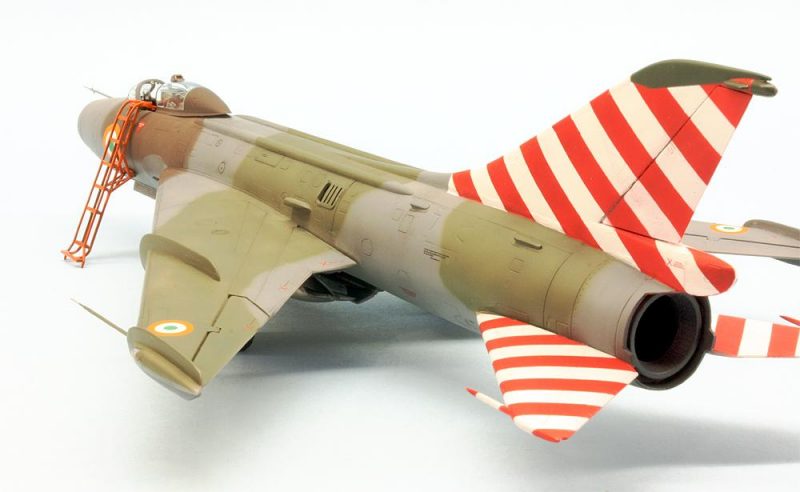
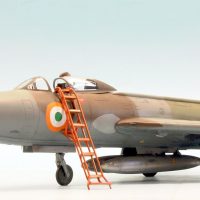
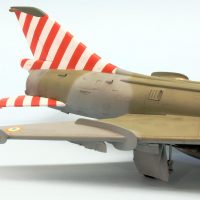
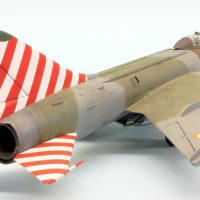
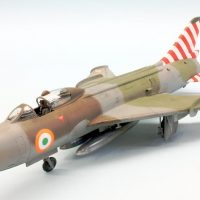

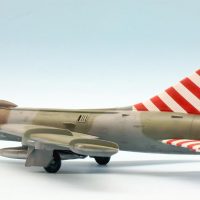
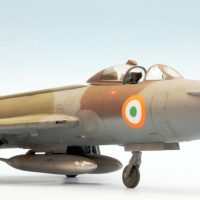
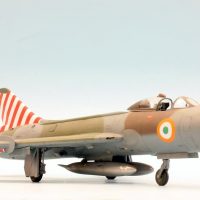
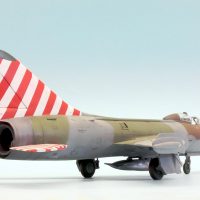
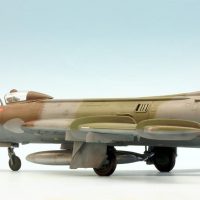
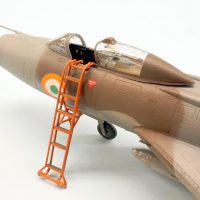

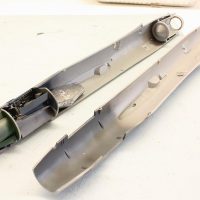
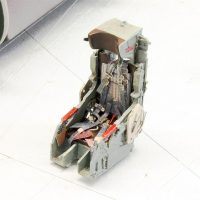
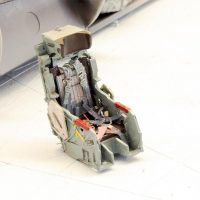
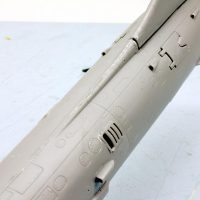
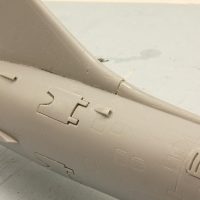
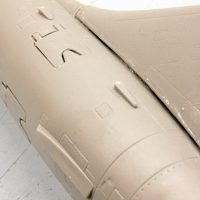
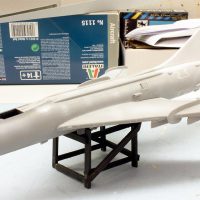
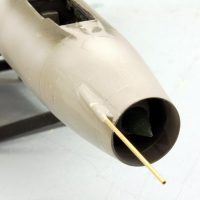
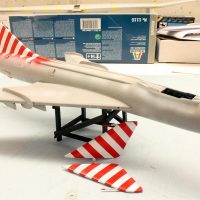

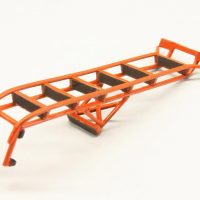
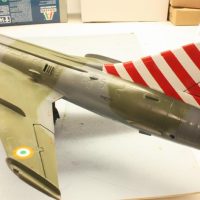
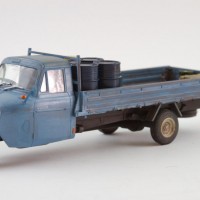
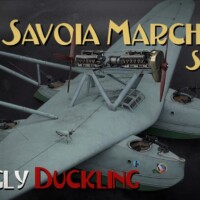

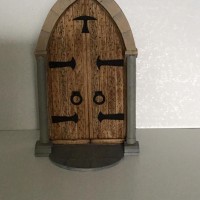
The "The Good, the Bad and the Ugly" all pounded, painted and formed into the "Good".
I've read some accounts of Egyptian pilots who fought in some of middle east conflicts and they stated that the type had short legs. To point of not being practical for the conflict.
Two thumbs up turning this beast into a looker.
That's a great model of a type not often seen on model forums! Great result on what seemed to be a challenging kit. Kudos to you for a fine scale model.
I had a teaching colleague who had immigrated from the Soviet Union in the early 1980s. He was an electrical engineer there and had served as a ground crewman on the Su-7 before that. I asked him once about these planes and his answer was, "Tough! Very tough airplane!"
Hi Roland @rosachsenhofer, your posts are always inspirational to me and this one's no exception, terrific write-up and great photographs, definitely liked.
Another Sachsenhofer gem, created from a common rock.
Nice work, Roland.
Beautiful work, as usual, Roland, especially true for this challenging kit!
Thanks for the history of the type, including its service with India Air Force.
A work of art, Roland.
Especially on that tail section you did great corrections.
The detailing on the seat is superb.
And another one knocked out of the park! great work as usual, especially with thi beastly kit ;-D
Superb paint job and build.
A great looking build!
A great article to accompany a great build, Roland!
Love the colourful tail - you know, I would never have thought to paint the red and white tail surfaces BEFORE painting the body camouflage. Very nice work!
Very nice! Great article and build. Looks fantastic.
I thank you all very much for this positive, encouraging and extremely motivating feedback!
Looks fantastic!
I almost immediately wanted to order one, til I read it was the Kopro kit, oh man, I suffered with that one many years ago and finally just dumped it. Swore to never buy a KP kit again!
You prevailed!